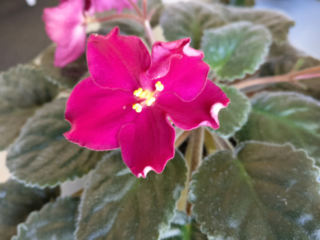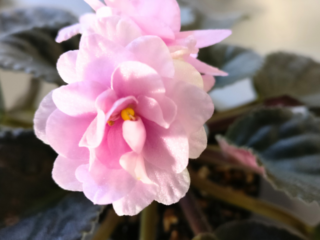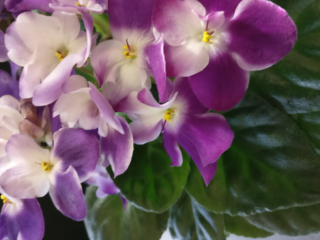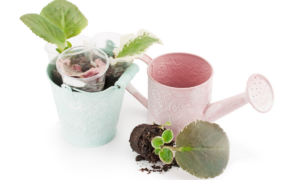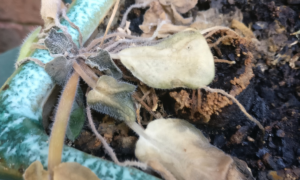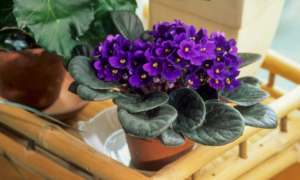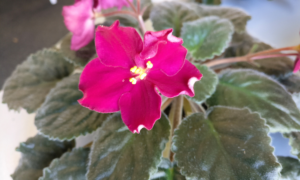Are there male and female African violets? The answer is yes! There is actually such a thing as male and female African Violets. That’s right – just like with other plants, some species of the beautiful violet can be either male or female.
So how do you tell if your African Violet is male or female? Are there differences in blooming between males and females? We’ll answer these questions for you today! Let’s take a closer look at the fascinating topic of whether or not there really are “male” and “female” african violets.
Table of Contents:
- The Difference Between Male and Female African Violets
- How to Tell if Your African Violet is Male or Female
- Do Male and Female African Violets Bloom Differently?
- FAQs in Relation to Are There Male and Female African Violets?
- Conclusion
The Difference Between Male and Female African Violets
Are there male and female African violets? The answer is yes! Knowing the difference between male and female African violets can help you determine which type of plant is best for your home garden.

Male African violets have one stamen, while females have two pistils. Stamens are the pollen-producing parts of the flower, while pistils contain ovules that produce seeds when fertilized by pollen from another flower. Male flowers typically bloom more than female flowers, so if you’re looking for a flowering houseplant, it may be best to choose a male African violet.
The size of an African violet’s blooms can also vary depending on its gender. Female plants tend to produce larger blooms than males because they require more energy to create their seed-bearing ovules. However, both types of plants will still provide plenty of color and beauty in your home garden!
In terms of care requirements, there isn’t much difference between male and female African violets; both need bright indirect light and moist soil with good drainage to thrive indoors or outdoors in warm climates (USDA zones 9 through 11). They should also be kept away from cold drafts or temperatures below 55 degrees Fahrenheit as this could cause them to go dormant during winter months or even die off completely if exposed for too long.

Overall, knowing the differences between male and female African violets can help you make an informed decision about which type would work best for your needs. With proper care and attention, these lovely flowers will bring beauty into any space all year round.
How to Tell if Your African Violet is Male or Female
When it comes to African violets, there are two types of plants: male and female. Knowing the sex of your plant is important for successful propagation and blooming, and is always determined by the parent plant. To determine the sex of your African violet, look at the plant’s blooms. Male African violets have only stamens, while female plants have both pistils and stamens.
Stamens are the male reproductive organs that produce pollen in flowers. They consist of a slender filament topped with an anther which contains pollen grains. On male African violets, you will see these filaments protruding from the center of each bloom without any other structures present.
Pistils are the female reproductive organs found in flowers and consist of three parts: stigma, style, and ovary. The stigma is a sticky surface that collects pollen grains from pollinators or wind-blown particles; it sits atop a long stem called a style which connects to an ovary containing egg cells at its base. Female African violets have both stamens and pistils present in their blooms so you should be able to spot them easily when examining your plant’s flowers closely enough under magnification if needed.
Don’t forget that even though most species of African violet exhibit distinct gender differences that they inherit from the parent plant, some may appear hermaphroditic with both sets of sexual organs present on individual blossoms. If this occurs, then either type could potentially reproduce itself through self-pollination but would still require proper care like all other specimens regardless.
Do Male and Female African Violets Bloom Differently?
Male and female African violets bloom differently. Male plants tend to produce more flowers than females, while female plants typically have larger blooms. Additionally, the pollen from male African violets is often less viable than that of females, meaning that it is less likely to result in successful fertilization.

The difference between male and female African violets can be easily identified by examining their reproductive organs, which are inherited from the parent plant. Male plants have anthers which are small yellow or orange structures located at the center of each flower; these contain pollen grains which are released when they mature. Female plants possess pistils instead of anthers; these are white or greenish-white structures with a sticky tip where pollination occurs.
However, since the pollen produced by males is often not as viable as that produced by females, this does not necessarily translate into greater success in terms of fertilization and seed production. On the other hand, female African violets tend to have larger blooms because they contain fewer but bigger petals compared to those on male flowers – although this also means that there will be fewer overall blossoms on a single plant.
African Violets may display distinct differences in flowering patterns between sexes, such as pinker hues for males versus brighter shades for females. However, this is not always true across all species and cultivars. Regardless of sex, all types of African Violets require similar care conditions including bright indirect light exposure, adequate humidity levels, regular watering and well-draining soil if you want them to thrive.
FAQs in Relation to Are There Male and Female African Violets?
Why is my African violet not flowering?
African violets are known for their beautiful flowers, but they may not bloom if the conditions aren’t right. Poor lighting, incorrect watering or fertilizing, and temperatures that are too high or low can all prevent flowering. If your African violet isn’t blooming, check to make sure it is getting at least 8 hours of indirect sunlight per day and water when the soil is dry to the touch.
Also be sure to use a balanced fertilizer every other week during its growing season and keep temperatures between 65-75°F (18-24°C). With these simple steps you should soon have an African violet in full bloom!
Should African violets be watered from the top or bottom?
African violets should be watered from the bottom. This is done by placing the pot in a container of water and allowing it to absorb moisture through its drainage holes. Doing this prevents water droplets from settling on the leaves, which can cause spots or discoloration.
Additionally, watering from the top can lead to root rot if too much water accumulates at the base of the plant. Bottom watering also ensures that all parts of your African violet are evenly hydrated for optimal growth and health.
How do you get African violets to rebloom?
African violets are relatively easy to care for and can rebloom with the right conditions. To encourage blooming, provide bright but indirect light, keep soil moist but not soggy, fertilize regularly and maintain temperatures between 65-75°F. Prune off old leaves and flowers as needed to promote new growth.
Make sure your African violet is getting enough humidity by misting or placing it on a tray of wet pebbles. With proper care, you should see your African violet start to bloom again in no time!

Conclusion
In conclusion, African Violets can be either male or female and there are ways to tell the difference between them. Male African Violets tend to have more foliage than blooms while Female African Violets will produce more flowers. Both types of plants require proper care in order for them to thrive and bloom properly.
Knowing whether your plant is male or female can help you provide it with the best possible care, so if you’re wondering “are there male and female african violets?”, now you know!
Are you looking for a fun and rewarding way to bring some color into your life? African Violets are the perfect choice! With proper care, these beautiful plants can provide years of enjoyment. Whether it’s learning how to propagate them or understanding their gender differences, there is something for everyone who wants to get involved in growing and caring for African Violets.
Join us today as we explore all that this amazing plant has to offer!

